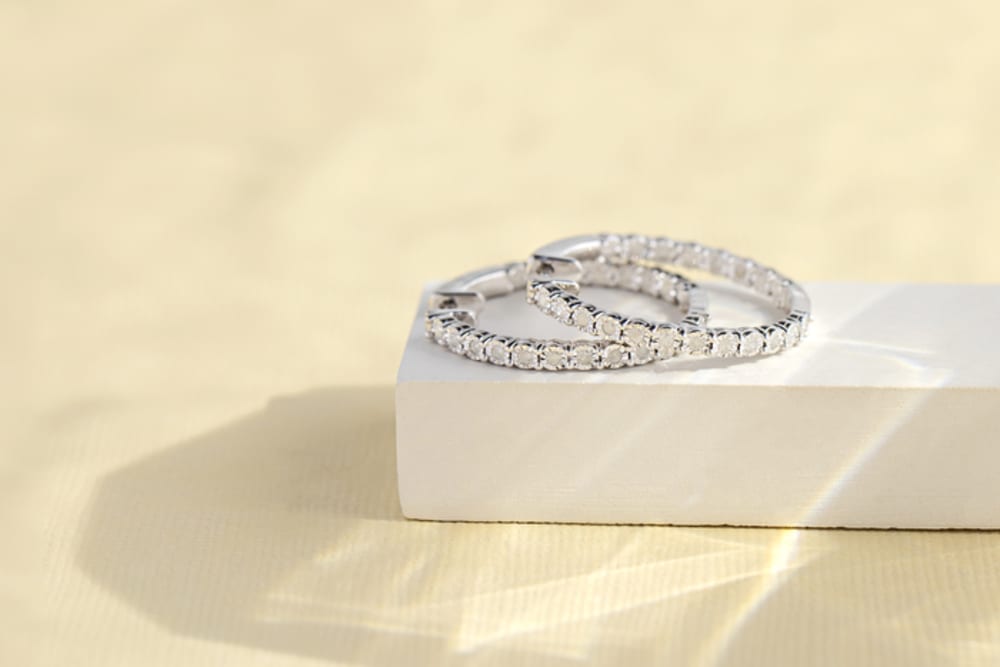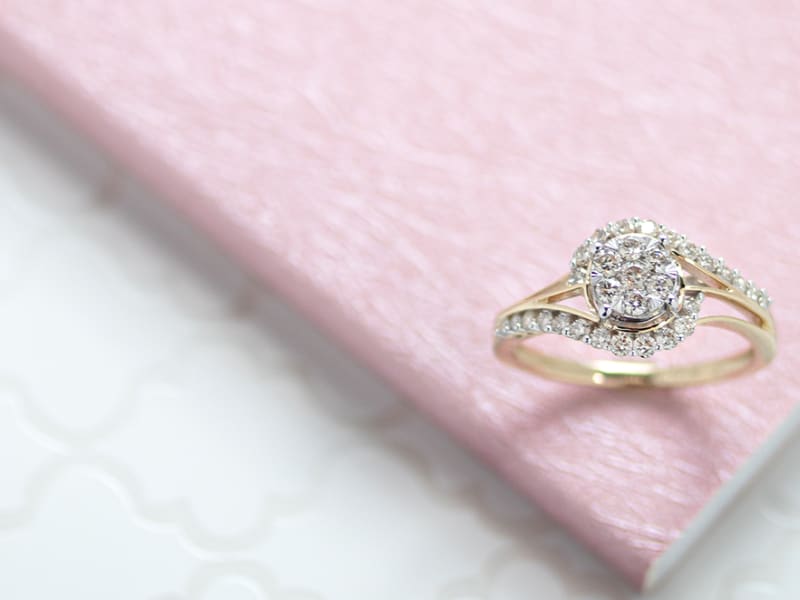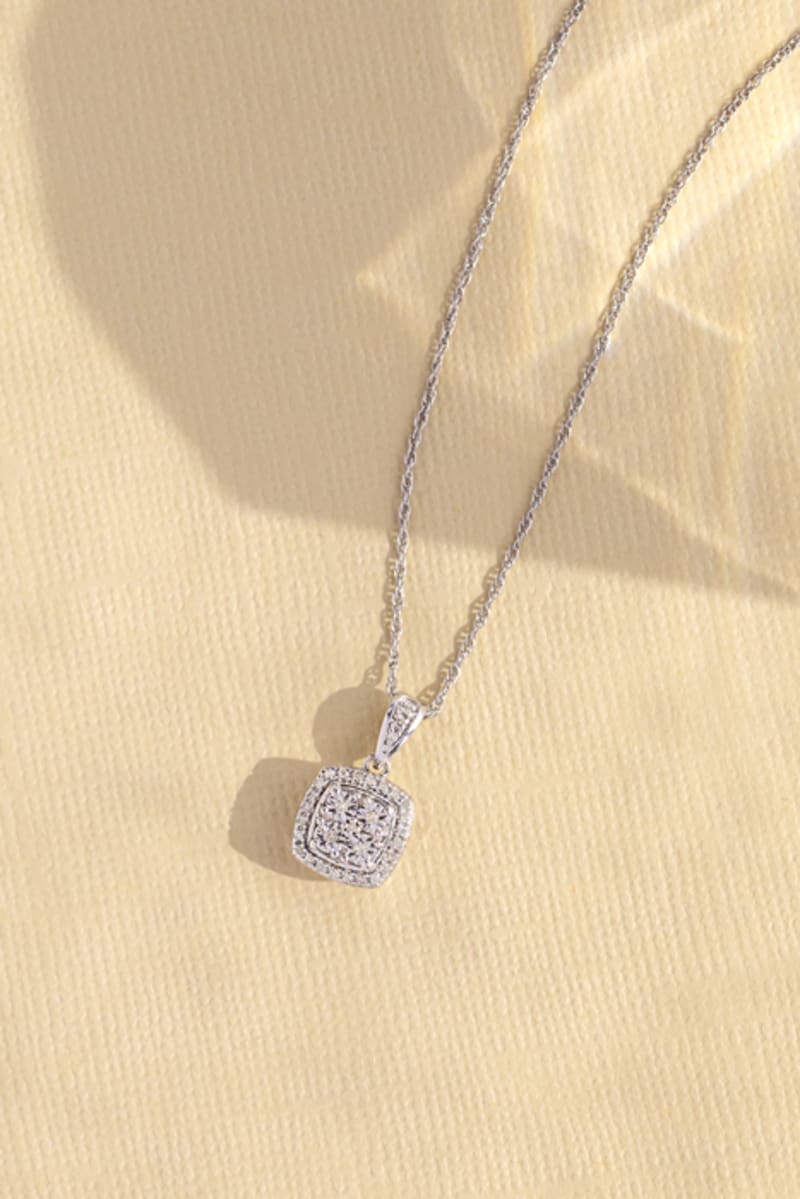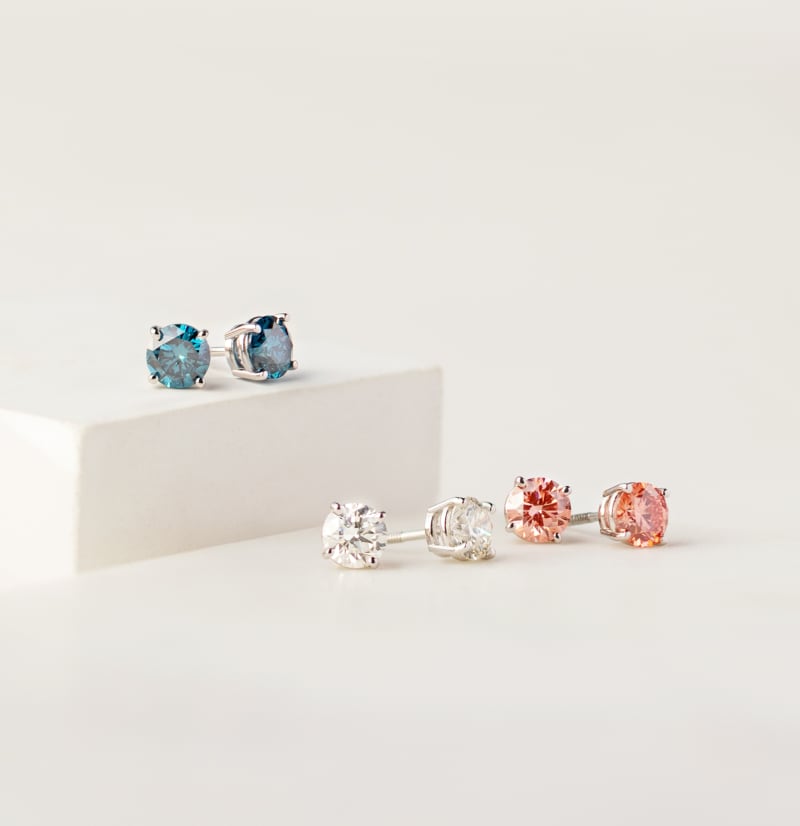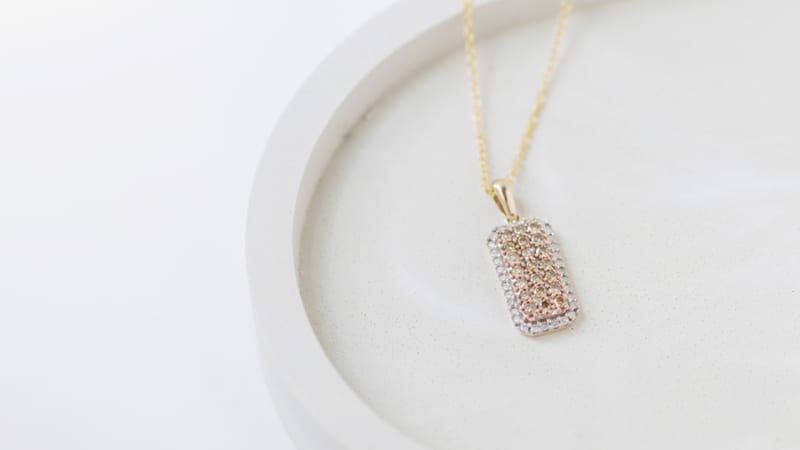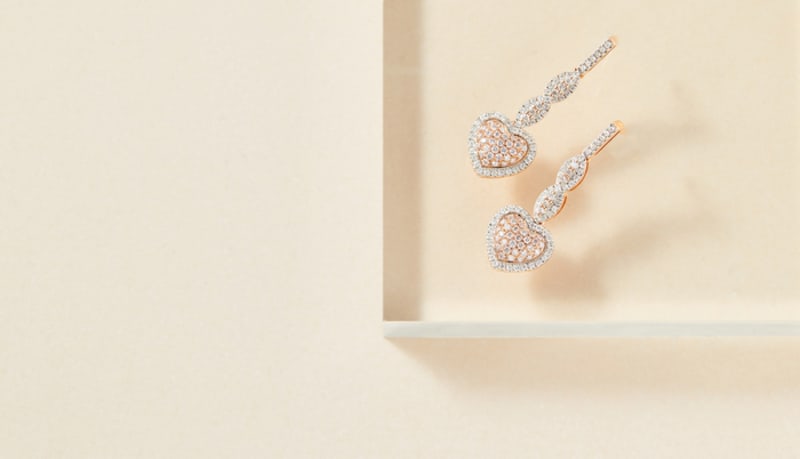Known as the “King of Gemstones,” one of the “Big Four” most desirable gems and a girl’s best friend, April’s birthstone is as classic as it gets. The diamond is a shining and sparkling symbol of love, endurance and abundance. From elegant engagement rings to chic statement pieces, there’s a diamond piece for every occasion.
What are the properties of a diamond?
This gem is as versatile as it is timeless. With a perfect Mohs hardness rating of a 10, diamonds are ideal for frequent wear. They’re extremely strong and durable, meaning your jewelry will definitely stand the test of time. Ranging from a colorless classic to a bold blue, diamonds come in a wide variety of colors. It can naturally be found as white, pink, yellow, red, brown, green, orange, black and more. The gem’s color is caused by different trace elements in the diamond’s carbon structure. Color is one of the four C criteria used to rate diamonds.
